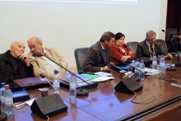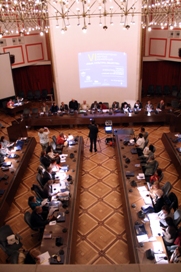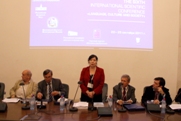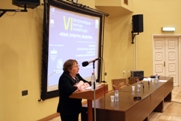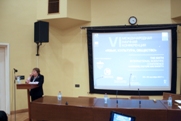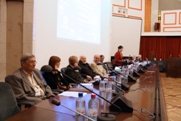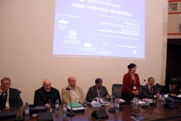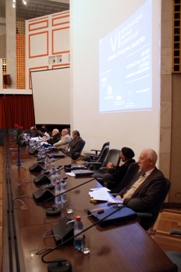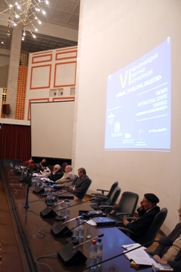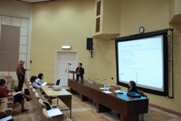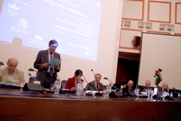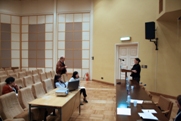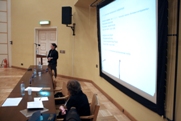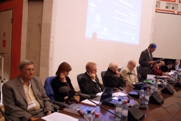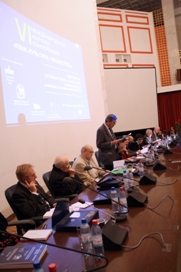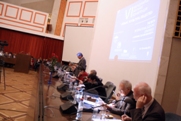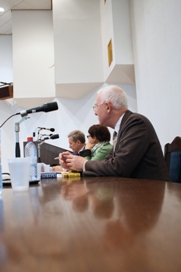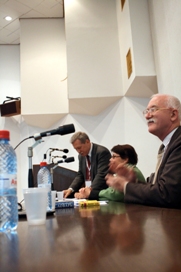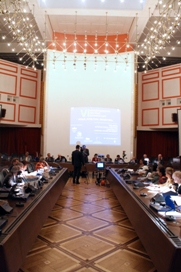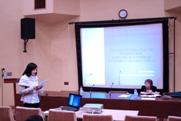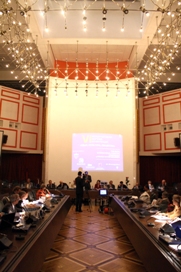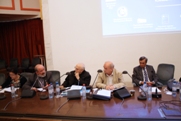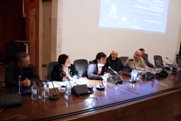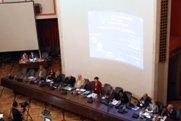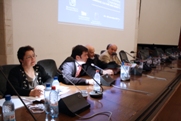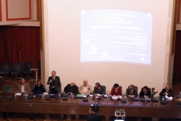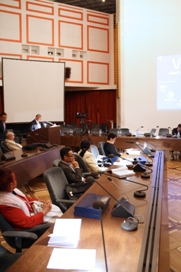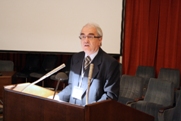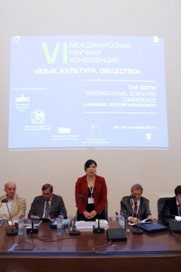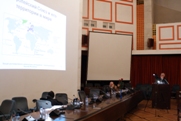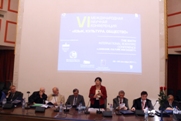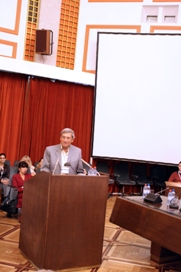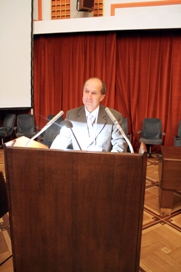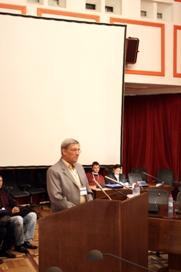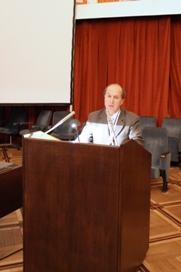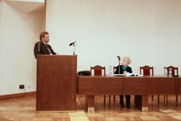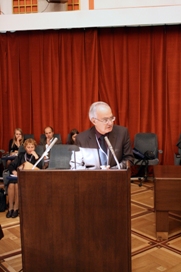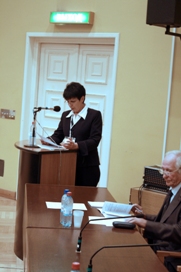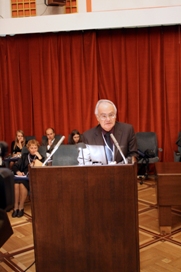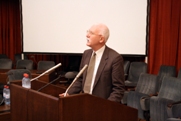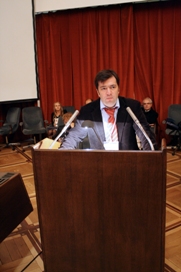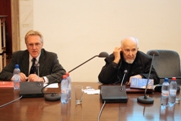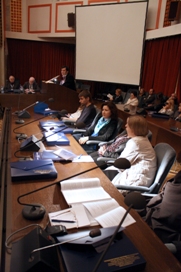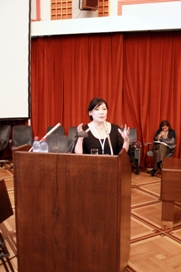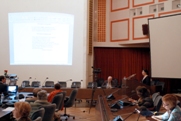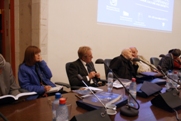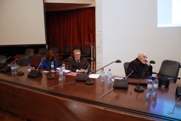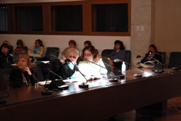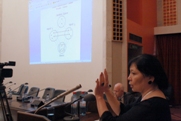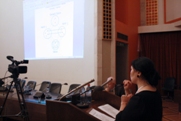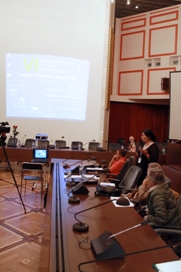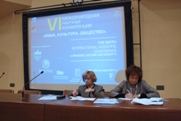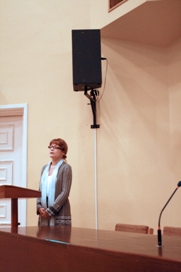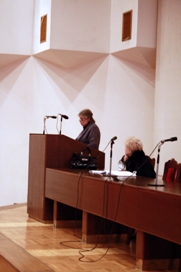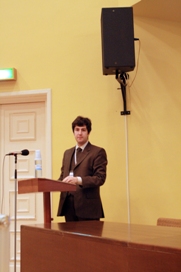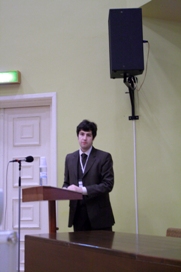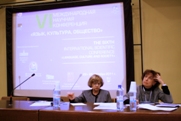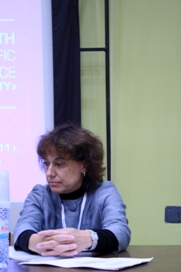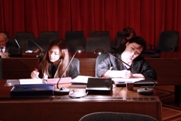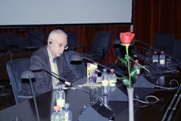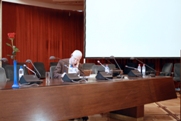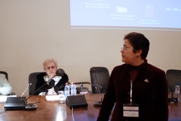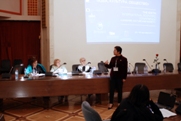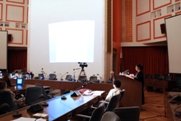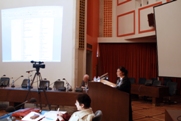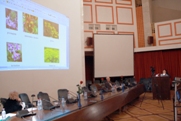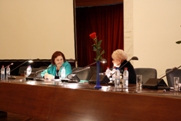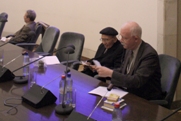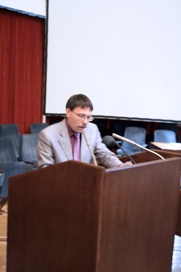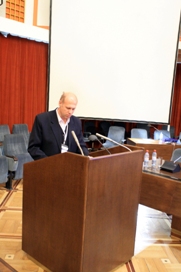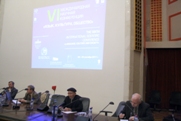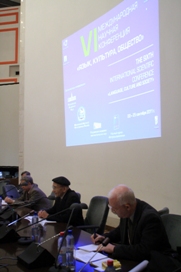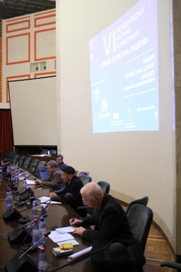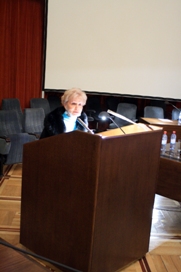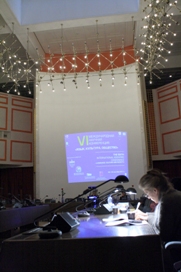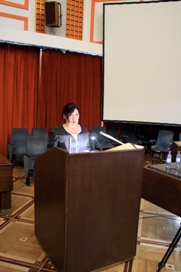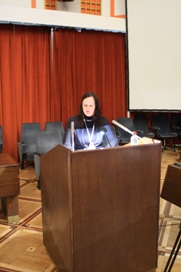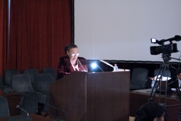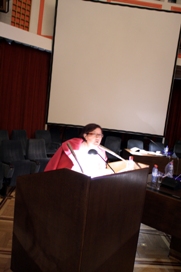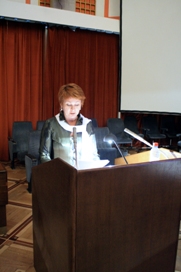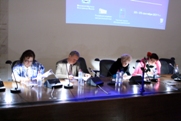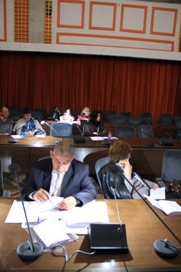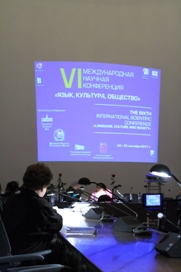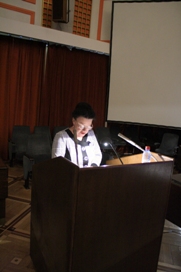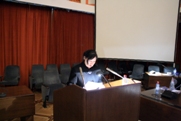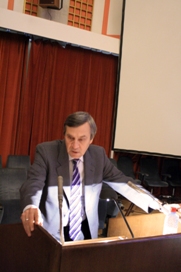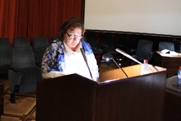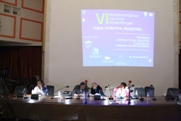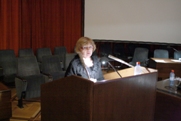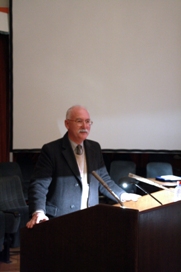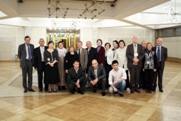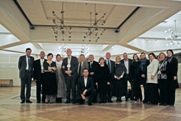
Основные критерии выявления криптоклассов |
«ЯЗЫК, КУЛЬТУРА, ОБЩЕСТВО»
22-25 сентября 2011 года
СЕКЦИЯ III
ТЕОРЕТИЧЕСКИЕ И ПРИКЛАДНЫЕ ПРОБЛЕМЫ ЛИНГВИСТИКИ
— — — ◊ ◊ ◊ — — —
О.О. Борискина
Воронежский государственный университет (Россия)
The Main Criteria for the Exploration of Noun Cryptotypes
O.O. Boriskina
Voronezh State University (Russia)
Summary. An approach to the study of noun classes proposed in the paper exploits the term cryptotype introduced by B. Lee Whorf (1956), and it develops his idea of phenotype (overt word class) vs cryptotype (covert word class) distinction.
Introduction
An approach to the study of noun classes (NC) proposed in this paper exploits the term cryptotypeintroduced by B. Lee Whorf (1956), and it develops his idea of phenotype (overt word class) vs. cryptotype (covert word class) distinction.
We argue that noun classes in world languages vary in degree of grammatical representation. Gender in European languages is the most grammaticalised type of a noun class. The least grammaticalised is a class of so called numeratives (e.g., lexical count words in Asian languages). A variety of noun classifications in world languages (either overt or covert) is in-between. So, a noun cryptotype is approached in this research as a covert class of Lexical Grammar. It is referred to the type of classification of nouns, marked by lexical selection in a syntactical construction rather than a morphological tag.
The main objective of current research is to explore the noun cryptotypes of the English language. In this research, we have adopted the practice of describing noun classes in the world languages (e.g., Dixon 1968, Rosch 1973, Givon 1996, “Foundations of African Linguistics”/ Vinogradov (Ed.) 1996, 2000, Gillon 2005, Cohen & Lefebvre 2005); the main achievements in the investigation of metaphor (Arutjunova 1976, Uspenskij 1979), the metaphoric representation of concepts (Johnson 1980, Lakoff 1986, Lakoff & Johnson 1987, Kцvecses 2002, 2005) and the primary metaphors theory (Grady 1997); the implications of Covert Grammar (Katsnelson 1972); the basic assumptions of Construction Grammar (Fillmore 1985, Kay & Fillmore 1999), Goldberg (1996), Pattern Grammar (Hunston & Francis 2000) and the concept of collostruction (Gries & Stefanowitsch, 2003, 2004).
The recognition of cryptotypes
Out of the three main criteria (semantic, morphologic and syntactic) for a noun class exploration (Vinogradov et al, 1996), only two are applicable to the cryptotype recognition. Since a cryptotype lacks morphological marking, it is meant to be identified by means of the syntactic and the semantic criteria.
Like many overt noun classes of African languages (see, e.g., Vinogradov 1993, Toporova 1996, Koval‘ 1996) a cryptotype is semantically heterogeneous. It means that the nouns the class incorporates are diverse in terms of their lexical meanings but are united owing to the “prototypical categorical attribute” (PCA) which underlies the noun class. While the PCA is indeed part of the core meaning of the nouns that are called class prototypes, there are nouns that are only associated with the class because the PCA is the element of their metaphorical meaning, i.e. they are conventionally attributed to the noun class. In a word, a cryptotype includes PCA prototypes and metaphor-driven type of nouns. To illustrate, let us take the PCA ‘inanimate, hand-fit, long object of fixed pointed shape’. Among the class prototypes are such nouns as stick, needle, rod, prickle, arrow, etc. All of them are polysemantic with all their meanings relating to the cylindrical pointed shape that fits the hand. Such nouns as pain, light, image, music, some emotions (disappointment, joy, grief, excitement, fear, hope, loss, love, pity) , the forms of verbal communication (dispute, discussion, question) , names of various social concepts (impact, experience, power, practice) are attributed to this cryptotype in accordance with their metaphorical meaning that bears the traces of the nouns‘ former occurrences, which, in their turn, reflect the cognitive associations of these abstract entities with the properties and functions of ‘fixed pointed shape’.
Many scholars point out that the semantic foundations of noun classes in African languages have been fading. As a result, the semantic principle of class formation is losing its validity for the study of language systems (Vinogradov et al 1996). V.A.Vinogradov (1996) states that when the semantic criterion is ambiguous, and the morphological mark of the class has been obliterated, the syntactic agreement, even though implicit, becomes the only reliable warrant of a noun classification. Thus, a cryptotype is largely determined by the syntactic criterion.
Schematically, the cryptotype recognition procedure is as follows: class prototypes → classifiers → metaphor-driven type of nouns. Identification of English cryptotypes starts from the contextual analysis of the class prototypes in corpora. The detailed investigation of the occurrences of prototypical nouns in corpora allows us to select the constructions, or rather collostructions, which can be further used for the purposes of diagnosing the class membership of abstract nouns. Collostruction is understood as the pattern of co-occurrence between the collocating items (collexemes) which occur preferably in certain constructions (cf. Gries and Stefanowitsch 2003, 2004). Collostructions are treated in the current research as a means of lexico-syntactic recognition of noun classes, namely classifiers. The prototypical nouns of a cryptotype and the words which assign the meaning to the construction are called collexemes. The main focus of the study is collostructional patterning observable within the argument structures associated with predicating words. Additionally, N of N constructions are taken into account. Then we undertake a corpus analysis of abstract nouns‘ aptitude for filling the syntactical slots of classifiers. The class membership of a noun is diagnosed when it occurs in the collostruction(s) associated with a particular cryptotype. The example below shows discourse evidence of the noun evidence being attributed to the cryptotype with PCA ‘inani-mate, hand-fit, long object of fixed pointed shape‘ due to the nouns’ occurrence in the S-slot of the classifier [a pointed object punctures smth./smb.]
Frequently good arguments and good evidence will puncture them.
Apart from the two criteria mentioned above, we apply the “typological principle of contrastive grammar” to the investigation of cryptotypes. The principle is as follows: if a NC is grammatically mapped (represented) in a language (L1), and is NOT represented in the Grammar of L2, it is viewed as a grammatical lacuna of L2, which can be identified and studied in latent Grammar or Lexical Grammar of L2. Many world languages have an overt grammatical NC with the PCA ‘fixed pointed shape’. This fact can be regarded as a basis for the identification of a cryptotype with this PCA, which is a lacuna in the Grammar of English.
All things considered, a cryptotype is defined as the principle of distribution of nouns among classes in accordance with a certain semantic feature (PCA) and with reference to the typological principle of contrastive grammar, evidentially revealed in syntax, particularly in classifying collostructions of the noun class.
Conclusion
We believe that the approach demonstrated in the paper opens up a range of possibilities for research. Firstly, it allows for a more holistic view of language categories evoked in different types (cryptotype vs. phenotype) and can contribute to pursuing common grounds for the classification of nouns in typological perspective. The main challenge of pursuing the common grounds for the classification of nouns is that, presumably, there should be a universal set of noun properties reflected in grammatical meanings of some languages (morphologically tagged) vs. lexical meanings of others (marked by lexical selection in syntactical constructions). Secondly, the results of the exploration of noun cryptotypes of English can have some practical implications for the Lexical Grammar of English as well as for the Theory of Metaphor and linguistic categorisation. In particular, the data base of English cryptotypes can be used in lexicography, for educational purposes, and in formulating and testing the hypotheses, related to noun classifications. Finally, we believe, that the adequately formalised description of cryptotypes can find application in computational modeling and text processing issues.


